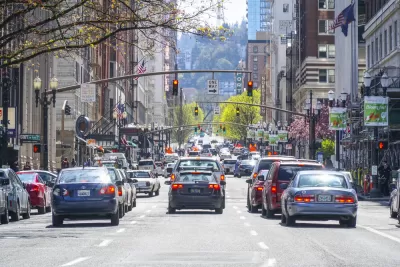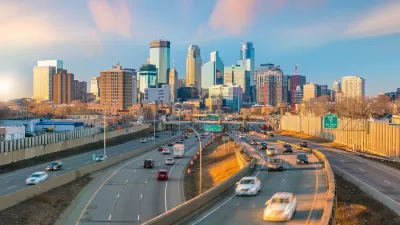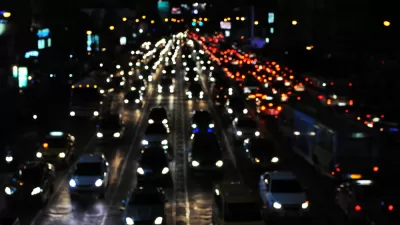The pandemic let many people experience a commute-free lifestyle, but can we reduce rush-hour traffic as we make our return to physical workplaces?

"Every recent survey reports that the rush-hour commute is, to most of the drivers who endure it, the most difficult and unpleasant part of their day," writes Alan Ehrenhalt. "It is also the most alienating." Yet "[i]t shouldn’t be forgotten that the solo commute is a creation of the 20th century. In Victorian times, work and home life were concentrated in the same places." In fact, "[t]he nightmares of rush hour were and are creatures of the automobile, the modern suburb and the zoning ordinances that have rigidly separated commercial and industrial enclaves from the residential districts of metro areas."
During the pandemic, travel patterns shifted significantly. "Drivers, especially those working at home, have been spacing out their travel much more evenly over the course of the day," flattening the rush hour traffic peaks. "Is there a way we can buck the historical trend of eventual return to congestion and keep something like the current arrangement going?"
In lieu of a scenario where a significant percentage of workers keep working from home(a possibility that carries its own rippling implications), Ehrenhalt argues that a simple solution to the commute problem "would be to bring most remote workers back to the center city but to stagger their hours, as has been happening to a limited extent already." Our "nightmare rush hours" are a result of "inefficient management practices — we could wake up from the nightmare with a commitment to sensible scheduling."
Of course, writes Ehrenhalt, "the most appealing long-term answer is for more of us to live near the places where we work," reducing the need for extensive travel to and from work. The commuting problem can only be solved by eliminating the need for it for more people.
FULL STORY: Is There an Exit Ramp from the Rush-Hour Nightmare?

Maui's Vacation Rental Debate Turns Ugly
Verbal attacks, misinformation campaigns and fistfights plague a high-stakes debate to convert thousands of vacation rentals into long-term housing.

Planetizen Federal Action Tracker
A weekly monitor of how Trump’s orders and actions are impacting planners and planning in America.

In Urban Planning, AI Prompting Could be the New Design Thinking
Creativity has long been key to great urban design. What if we see AI as our new creative partner?

King County Supportive Housing Program Offers Hope for Unhoused Residents
The county is taking a ‘Housing First’ approach that prioritizes getting people into housing, then offering wraparound supportive services.

Researchers Use AI to Get Clearer Picture of US Housing
Analysts are using artificial intelligence to supercharge their research by allowing them to comb through data faster. Though these AI tools can be error prone, they save time and housing researchers are optimistic about the future.

Making Shared Micromobility More Inclusive
Cities and shared mobility system operators can do more to include people with disabilities in planning and operations, per a new report.
Urban Design for Planners 1: Software Tools
This six-course series explores essential urban design concepts using open source software and equips planners with the tools they need to participate fully in the urban design process.
Planning for Universal Design
Learn the tools for implementing Universal Design in planning regulations.
planning NEXT
Appalachian Highlands Housing Partners
Mpact (founded as Rail~Volution)
City of Camden Redevelopment Agency
City of Astoria
City of Portland
City of Laramie





























